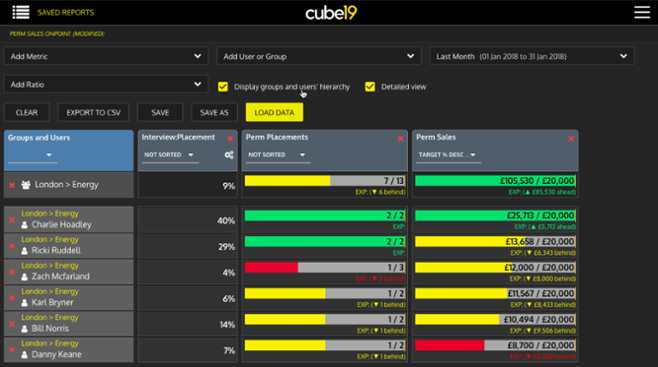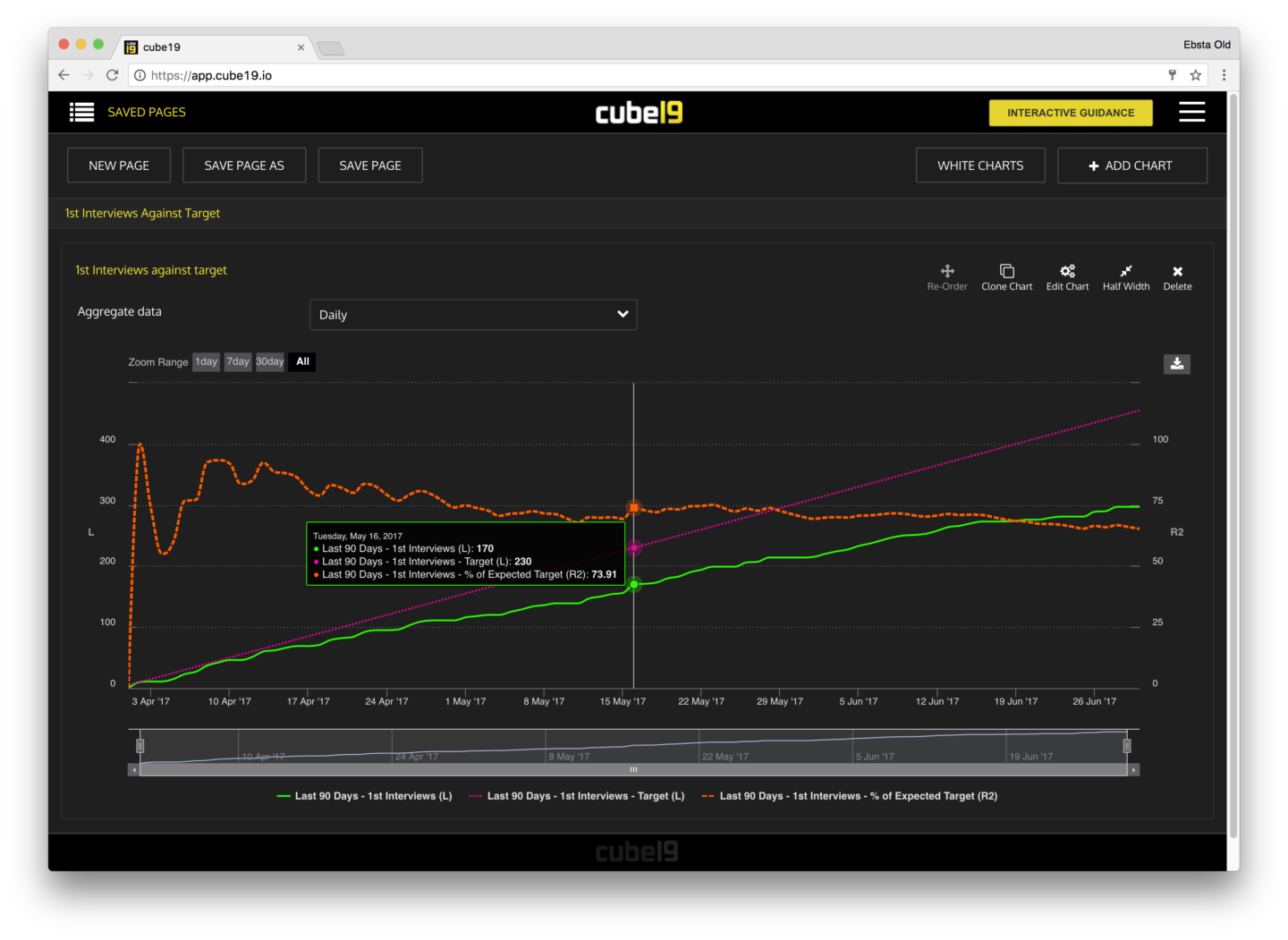Recruitment metrics are used within businesses to measure how well a business is performing against targets. In the recruitment industry, there are many variables that will affect the overall performance of the organisation that it is of paramount importance to frequently monitor key statistics. Read on to learn which data sets you should be looking at on a daily basis and why.
Business Development Recruitment Metrics
It is the business development’s role to gain new clients, add more jobs to the pipeline and secure good rates for the fulfilment of these roles.
1. Clients Added
The first metric to track is the number of clients that have been added to your database. You need to be aware of the number of new clients that are being taken on board. Too few and you won’t have enough new jobs to fill and too many and you may not have the resources to fill the requirements.
New clients are only valuable if they have jobs to be filled and so this metric shouldn’t be looked at in a silo. You should review the ratiometric #clients added: #jobs added to ensure you are seeing the full picture.
2. Client Meetings
Tracking the number of client meetings that are happening will provide you with great insight as to whether or not these meetings are transforming into new jobs. If they are not, you may need to look more closely as to whether your clients are recruiting or not or if your business development team are not successfully engaging with the client to gain the new roles.
3. Jobs Added
If new clients are being added and client meetings are successful then the number of jobs available to work on should increase. This mid-funnel metric can be used to forecast the amount of revenue your organisation can expect to make.
Again, be sure to measure efficiency by using the #jobs added: #jobs filled ratio. For accurate forecasting, you should also look at the time to fill ratio.
4. Placements
The overall effort in the above metrics should result in fruitful placements. Reviewing the number of placements and the average placement fee will demonstrate if your overall business revenue targets are going to be met.
Performance Recruitment Metrics
So, business development is working effectively. Now it is over to your consultants and researchers to find candidates and fill the jobs. Here are the important metrics to keep a handle of here:
5. Live jobs
How many live jobs is each individual consultant working on? Keeping an eye on this metric ensures that you have the greatest chance of filling the roles. You can monitor the success of each individual and their jobs to placement ratio. It also allows the opportunity for intervention if one individual is working too many or too few roles.
6. Candidate meetings
Candidates are required in order to fill jobs and as such there should be a correlation between the number of candidate meetings happening and the number of live jobs you have available.
7. CVs sent & first interviews
Without sending CVs you won’t make placements. So, here you need to review the CV sent: 1st interview ratio. Sending 100 CVs may look great on paper, but if you don’t get any interviews as a result then your consultants are not working efficiently. You should also look at the Jobs Added: CV Sent ratio too so you can ensure the jobs are being serviced appropriately.
8. Placements
Track the number and value of placements by consultant, team and industry sector. It is important to monitor the number and value of placements by team/office as well as by consultant to gain a broader understanding of which managers, teams and sectors are performing well so you can emulate this in different areas. It is also a measure of efficiency to track the average time to fill of the placements.
Excessive data, inaccurate or incomplete data
So, you now know which metrics you should be reviewing for a recruitment organisation to flourish and grow. Measuring these recruiting metrics not only indicates how well a firm is doing but it will also provide an insight into if you have loyal, satisfied clients and candidates. With these two elements a success then you stand more chance of having loyal and satisfied consultants too.
Our global recruitment survey of agencies found that two-thirds of recruiters use data to track KPIs and sales pipelines, and at least half are using it to inform board decisions. Yet 56% lose time every month trying to track data, with 40% struggling to access key information or unable to trust its accuracy.
Track these recruitment metrics with ease
 cube19 is a Growth Analytics Platform that encourages consultants to accurately complete the database in real-time using gamification. With cube19 you can report on every recruitment metric and drill down to answer any business question you may have. It has modules such as OnPoint that allows you to review metrics and ratios and compare them between not only individuals but teams and offices too. If you want more information or if you are interested in any of our recruitment metric studies please get in touch.
cube19 is a Growth Analytics Platform that encourages consultants to accurately complete the database in real-time using gamification. With cube19 you can report on every recruitment metric and drill down to answer any business question you may have. It has modules such as OnPoint that allows you to review metrics and ratios and compare them between not only individuals but teams and offices too. If you want more information or if you are interested in any of our recruitment metric studies please get in touch.




